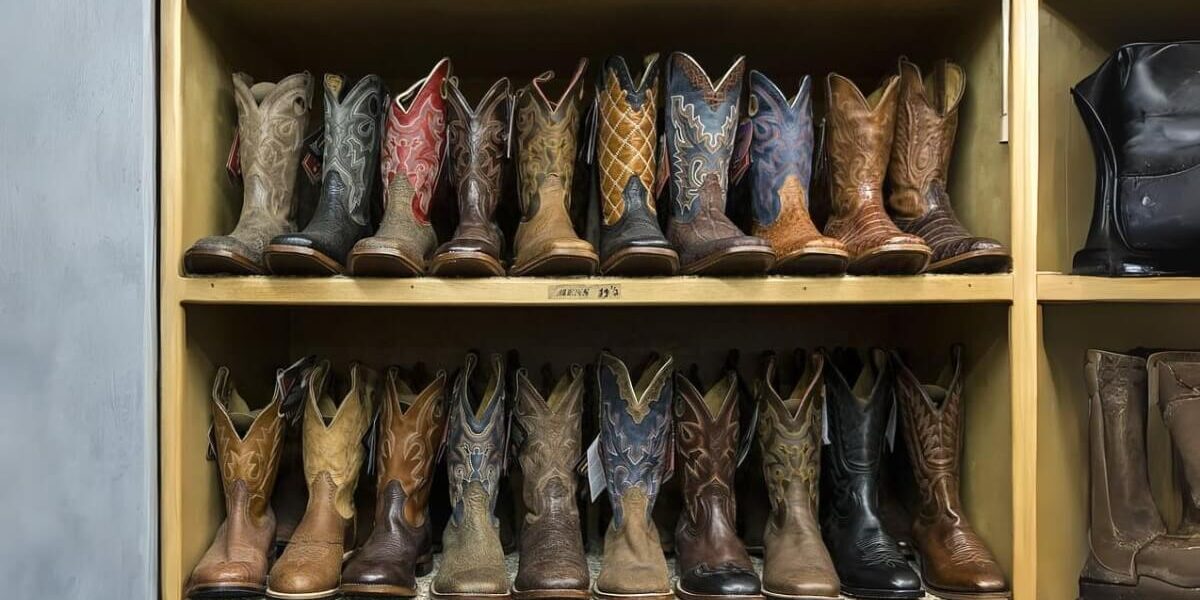The Best Fish Skin Boots for Every Occasion
Introduction
Imagine a world where your shoes are stylish, comfortable, sustainable, and eco-friendly. In the fashion industry, where sustainability is becoming increasingly important, a unique and innovative material makes waves—fish skin. Yes, you read that right. Fish skin boots are a game-changer in footwear. They offer a cruelty-free alternative to traditional leather, providing durability, water resistance, and a touch of elegance. Every pair of fish skin boots narrates a tale of creativity, environmental responsibility, and reverence for the natural world.
The leather industry has been scrutinized due to its significant carbon footprint and ethical concerns, leading many to seek alternatives that align with their values. Enter fish skin boots, a product that reduces Waste and celebrates the beauty of nature’s diversity.
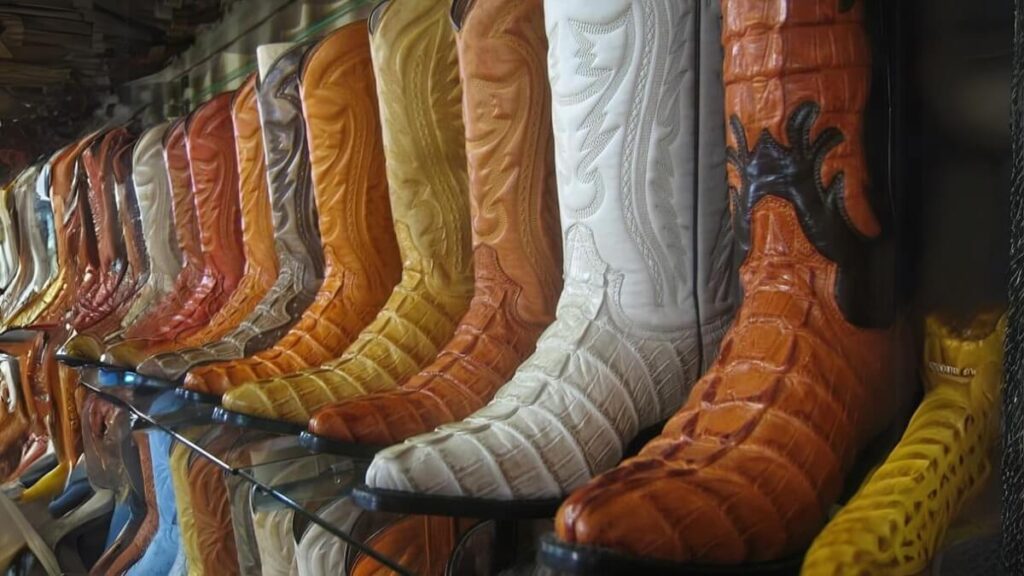
These remarkable boots are crafted from the skins of various fish species, such as salmon and cod, which would otherwise be discarded as fishing industry byproducts. By repurposing this waste material, fish skin boots offer a unique solution that combines sustainability with style, making them a remarkable innovation in fashion.
In this comprehensive blog post, we’ll dive deep into the world of fish skin boots, exploring their origins, manufacturing processes, environmental benefits, and cultural significance. We’ll also address common concerns, such as durability and ethical considerations, and provide insights into where to find these unique footwear pieces.
So, whether you’re an eco-conscious fashionista, an outdoor enthusiast seeking sustainable gear, or simply someone curious about this innovative material, get ready to embark on a journey that will change how you think about your footwear choices.
What are Fish Skin Boots? Unveiling Nature’s Sustainable Footwear Marvel
Have you ever imagined wearing shoes crafted from fish skins? While it may sound peculiar, fish skin boots are a remarkable innovation that has quickly and sustainably gained traction. These unique footwear pieces are eco-friendly and boast a distinctive aesthetic appeal and durability that rival traditional leather.
The Origins of Fish Skin Boots
Utilizing fish skins for clothing and accessories has been introduced previously. Indigenous communities worldwide, particularly those residing in coastal regions, have been repurposing fish skins for centuries. From apparel to footwear, these resourceful communities have found ingenious ways to minimize Waste and make the most of the materials at their disposal.
However, in recent years, fish skin boots have entered the mainstream fashion industry. As the demand for sustainable and cruelty-free alternatives to leather grew, innovative designers and manufacturers recognized the potential of this underutilized material.
The Fish Species Used
Fish skin boots can be crafted from various species, offering unique characteristics and aesthetic qualities. Here are some of the most commonly used fish skins:
1. Salmon Skin: Prized for its beautiful patterns and vibrant hues, salmon skin is a popular choice among designers. The natural markings on the skin create a distinct and eye-catching appearance.
2. Cod Skin: Known for its durability and strength, cod skin is an excellent choice for footwear. Its subtle texture and neutral tones make it versatile for various styles.
3. Tilapia Skin: With its delicate patterns and soft texture, tilapia skin offers a luxurious feel and a unique visual appeal.
4. Wolffish Skin: Characterized by its distinctive spotted patterns, wolffish skin adds whimsy and individuality to fish skin boots.
The kind of fish chosen will depend on the intended appearance and the particular needs for performance and durability.
Advantages of Fish Skin Over Traditional Leather
While leather has been a longstanding material for footwear, fish skin boots offer several advantages that make them a compelling alternative:
1. Sustainability: Fish skin boots are made from leftover materials from the fishing business, which helps to reduce Waste and the environmental damage that comes with producing leather the old-fashioned way.
2. Cruelty-Free: For ethically minded consumers, fish skin is a better option because it comes from fish that are already being prepared for food, as opposed to leather, which requires the killing of animals.
3. Unique Appearance: Each fish skin is unique, with its patterns, colours, and textures, resulting in genuinely one-of-a-kind footwear pieces.
4. Water Resistance: Because fish skins are naturally waterproof, they’re a great choice for outdoor activities or inclement weather.
5. Breathability: Despite their water resistance, fish skin boots are surprisingly breathable, ensuring comfort and preventing excessive moisture buildup.
As the world embraces sustainable fashion and seeks innovative solutions, fish skin boots have emerged as a compelling alternative to traditional leather footwear. With their unique aesthetic appeal, eco-friendly credentials, and potential for further innovation, these remarkable boots are poised to impact the fashion industry.
The Sustainable Aspect: How Fish Skin Boots Are Revolutionizing Eco-Friendly Fashion
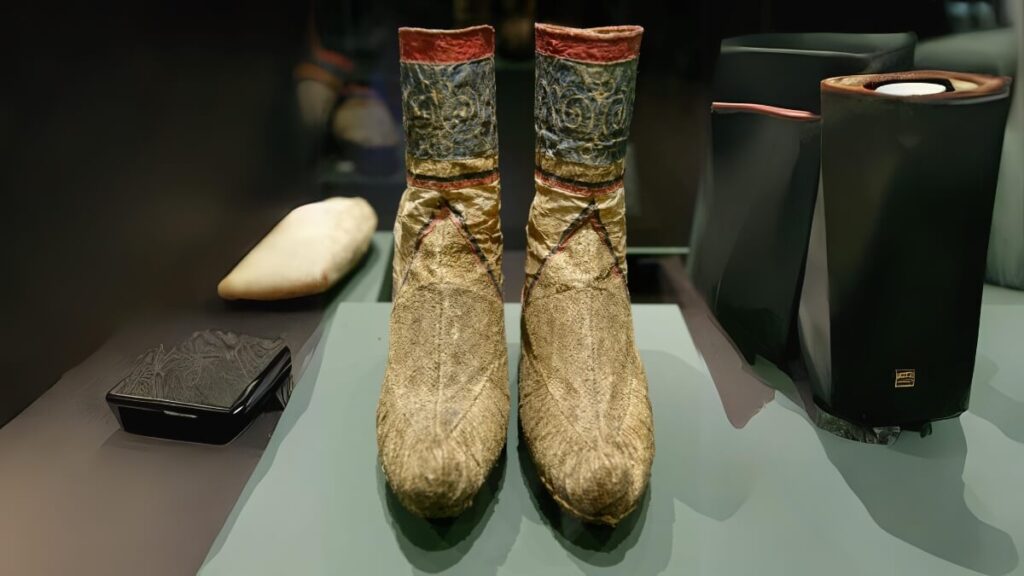
The fashion industry has come under fire for its large carbon footprint and unsustainable methods in a world where overconsumption and environmental degradation are becoming serious issues. However, a game-changing innovation is emerging in the form of fish-skin boots. These boots offer a compelling solution that reduces Waste and promotes a more conscious and responsible approach to fashion.
The Environmental Impact of Traditional Leather Production
Before delving into the sustainable aspects of fish skin boots, it’s essential to understand the environmental toll associated with traditional leather production. The leather industry significantly contributes to greenhouse gas emissions, water pollution, and deforestation. Here are some staggering statistics:
- Up to 10% of global greenhouse gases released from agriculture are attributed to the leather industry, according to figures from FAO and the UN’s Food.
- Tanning, the process of converting raw hides into leather, uses harmful chemicals, including chromium salts, which can contaminate water sources and soil.
- Deforestation is a significant issue, as cattle ranching for leather production is a leading driver of deforestation, particularly in the Amazon rainforest.
These sobering facts highlight the urgent need for more sustainable alternatives in the fashion industry, and fish skin boots offer a promising solution.
How Fish Skin Boots Contribute to Sustainability and Waste Reduction
Fish skin boots are a prime example of the circular economy in action, where Waste from one industry becomes a valuable resource for another. By repurposing fish skins that would otherwise be discarded as byproducts of the fishing industry, these boots:
1. Minimize Waste: Every year, millions of tons of fish skins are discarded as Waste, contributing to environmental pollution and resource depletion. Fish skin boots help divert this waste stream and give new life to a valuable material.
2. Reduce Environmental Impact: Unlike traditional leather production, transforming fish skins into boots requires a significantly lower carbon footprint and fewer harsh chemicals.
3. Promote Responsible Consumption: Consumers actively support a more sustainable and responsible fashion industry that values waste reduction and environmental stewardship by choosing fish-skin boots.
Sourcing and Processing of Fish Skin for Footwear
The journey of fish skin boots begins with responsible sourcing practices. Many manufacturers partner with sustainable fish processing facilities to obtain fish skins, ensuring traceability and ethical sourcing. The skins are then carefully cleaned, tanned, and treated using eco-friendly processes that minimize the use of harmful chemicals.
Some key steps in the production of fish skin boots include:
1. Cleaning and Dehairing: The fish skins are thoroughly cleaned and dehaired to prepare them for tanning.
2. Tanning: Various tanning methods are employed, including vegetable tanning, which uses natural tannins derived from plant sources, or mineral tanning, which utilizes more environmentally friendly mineral compounds.
3. Dyeing and Finishing: Depending on the desired aesthetic, fish skins can be dyed using natural or low-impact dyes and then finished with eco-friendly coatings for added durability and water resistance.
Fish skin boot manufacturers set a new standard for responsible and ethical fashion production by embracing sustainable sourcing and processing methods.
The growing awareness of customers’ environmental effects drives the demand for sustainable fashion alternatives. Fish-skin boots represent a revolutionary solution that reduces Waste and promotes a more mindful and responsible approach to fashion. By choosing these remarkable footwear pieces, you can enter a future where style and sustainability go hand in hand.
Fish Skin Boots: Exploring Design, Durability, Manufacturing, and Cultural Roots
Design and Style: Nature’s Canvas for Unique Footwear
Fish skin boots are a sustainable choice and a celebration of nature’s artistry. Every pair is a one-of-a-kind masterpiece, with unique patterns, colours, and textures that elevate them beyond mere footwear.
Patterns and Colors
- Salmon skin boasts vibrant hues, including deep reds, pinks, and oranges, accentuated by intricate patterns reminiscent of fine marble.
- Cod skin offers a more subtle palette of greys, blues, and whites, often featuring delicate striations and speckles.
- Tilapia skin showcases a harmonious blend of earthy tones with intricate scale patterns that resemble reptilian prints.
Styles and Silhouettes
- Boots crafted from fish skin can be worn in virtually any silhouette, from classic ankle booties to knee-high stunners.
- Designers have explored fusion styles, combining fish skin with other sustainable materials like cork or recycled plastics to create unique, eco-conscious pieces.
- For a touch of luxury, some brands offer fish skin boots adorned with intricate embroidery, beadwork, or laser-cut detailing.
Whether you’re a minimalist seeking understated elegance or a fashion maverick craving bold statements, fish skin boots offer a versatile canvas for self-expression while embracing sustainable fashion.
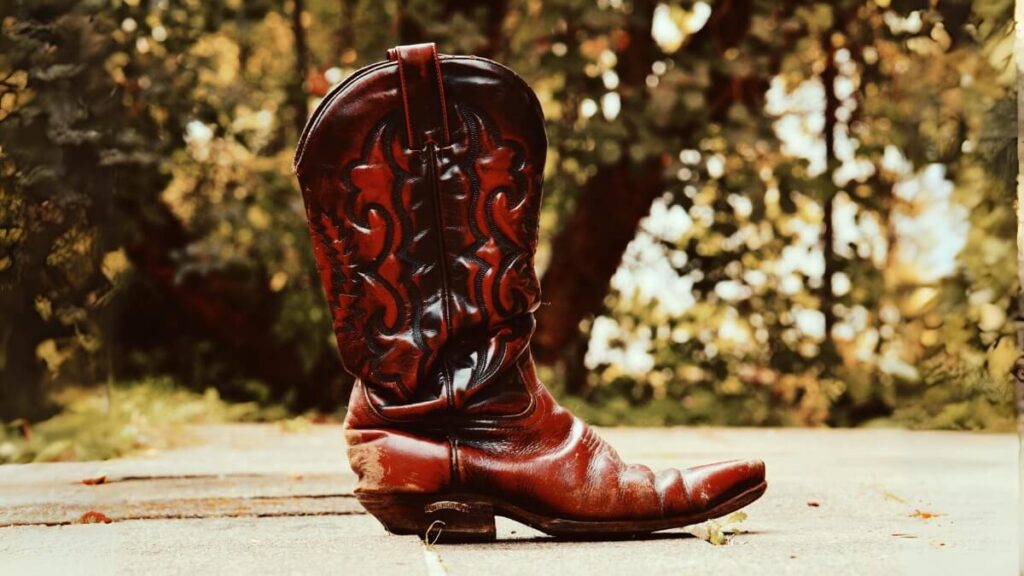
Durability and Performance: Putting Fish Skin to the Test
Sceptics may question fish skin’s durability, but this innovative material is surprisingly resilient and performance-driven. Manufacturing processes have improved the strength and durability of fish skin boots, making them a sensible option for outdoor activities and daily usage.
Strength and Abrasion Resistance
- The tanning process, often involving eco-friendly vegetable or mineral tanning agents, ensures that fish skin becomes solid and abrasion-resistant.
- Properly tanned fish skin can match or even surpass the durability of traditional leathers, withstanding wear and tear and grace.
Water Resistance
- One of the inherent advantages of fish skin is its natural water-resistant properties, making these boots ideal for wet weather conditions or outdoor activities like hiking or fishing.
- Many brands enhance water resistance by applying eco-friendly coatings or treatments, ensuring your feet stay dry and comfortable.
Breathability
- Despite their water-resistant nature, fish skin boots boast excellent breathability, allowing your feet to stay calm and dry even during extended wear.
- The unique structure of fish skin promotes air circulation, preventing moisture buildup and odour.
With their impressive durability, water resistance, and breathability, fish skin boots are not just a stylish choice but a practical one. They may protect and cushion your feet while withstanding the rigours of an active lifestyle.
Manufacturing Process: Crafting Sustainability, Step by Step
The journey of creating fish skin boots is a testament to the ingenuity and commitment to sustainability that drives this innovative industry. Every stage of the process, from sourcing to finishing, is meticulously planned to reduce the environmental effect and optimize the possibilities of this exceptional material.
1. Responsible Sourcing: Manufacturers partner with sustainable fish processing facilities to obtain the fish skins, ensuring traceability and ethical sourcing practices.
2. Cleaning and Dehairing: The skins undergo a thorough cleaning process to remove any impurities, followed by dehairing to prepare the surface for tanning.
3. Tanning: Eco-friendly tanning methods are employed, such as vegetable tanning using natural tannins from plant sources or mineral tanning with environmentally friendly mineral compounds.
4. Dyeing and Finishing: Fish skins can be dyed using low-impact or left in their natural hues, depending on the desired aesthetic. Finishes like water-resistant coatings or protective treatments are applied to enhance durability and performance.
5. Cutting and Assembly: Skilled artisans carefully cut and assemble the fish skin components, combining them with other sustainable materials like recycled rubber soles or cork insoles.
6. Quality Control: Each pair of fish skin boots undergo a thorough inspection to guarantee the finest durability and artistry.
7. Packaging and Distribution: Eco-friendly packaging materials minimize Waste, and responsible shipping practices reduce the carbon footprint of distribution.
The manufacturing process of fish skin boots is a testament to the industry’s commitment to sustainability, innovation, and environmental respect.
Cultural Significance: Embracing Traditional Wisdom
Fish-skin boots are a relatively recent invention, yet their origins are deeply ingrained in the rich cultural traditions of indigenous people worldwide. For centuries, these resourceful communities have embraced utilizing every part of the fish, including the skin, to minimize waste and honour nature’s gift.
Traditional Uses and Practices
- In the Arctic regions, indigenous peoples like the Inuit have long used fish skins to create waterproof and insulating footwear, essential for surviving harsh winter conditions.
- Coastal communities in Southeast Asia and the Pacific Islands have incorporated fish skins into traditional clothing, bags, and other accessories, showcasing their ingenuity in repurposing available materials.
- In the Amazon rainforest, indigenous tribes have used fish skins for various purposes, including creating intricate artwork and ceremonial garments.
By wearing fish-skin boots, modern consumers choose a sustainable fashion, honouring these indigenous communities’ traditional wisdom and practices. Every pair links antiquated customs and contemporary creativity, constantly reminding humans and the natural world of interdependence.
Growing consumer desire for ethical and sustainable design, fish-skin boots are a shining example of how innovation, tradition, and respect for the environment can converge to create truly remarkable products. With their unique designs, impressive durability, and deep cultural roots, these boots are more than just footwear—they are a testament to the power of conscious consumption and the beauty of nature’s gifts.
Fish Skin Boots: Where to Find Them and What the Future Holds
Where to Buy: Discovering the World of Fish Skin Footwear
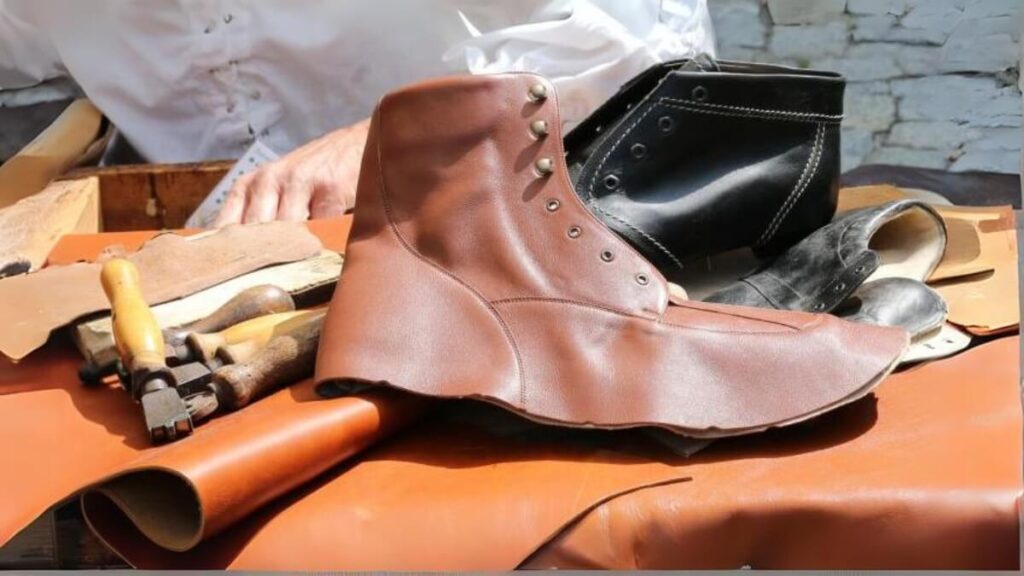
As the need for environmentally conscious and sustainable clothing is growing, more and more brands are embracing the innovative and unique material that is fish skin. From online retailers to speciality boutiques, numerous options exist for those eager to add a pair of fish skin boots to their wardrobe.
Online and Physical Stores
- Many brands and retailers offer their fish skin boot collections on their e-commerce platforms, complete with detailed product descriptions, sizing guides, and customer reviews, for the convenience of online shopping.
- For those who prefer a hands-on experience, speciality boutiques and concept stores in major cities often showcase fish skin footwear. These stores allow customers to try different styles and experience the unique textures and patterns in person.
Price Ranges and Value for Money
- Fish skin boots are typically priced higher than mass-produced synthetic options, reflecting the artisanal craftsmanship and sustainable practices involved in their production.
- Entry-level fish skin boots cost between $150 and $300, offering an accessible introduction to this innovative material.
- High-end and designer fish-skin boots cost over $500 and feature intricate detailing, luxurious finishes, and premium materials.
- While the initial investment may be higher, fish skin boots are renowned for their durability, making them a long-lasting and valuable addition to any eco-conscious wardrobe.
With many brands and retailers embracing this sustainable alternative, finding the perfect pair of fish skin boots has always been challenging. Whether drawn to the unique aesthetics or motivated to reduce your environmental impact, these boots offer fashion-forward individuals a stylish and responsible choice.
Future Outlook: Innovations and Potential for Mainstream Adoption
While fish skin boots have already made significant strides in the fashion industry, their potential for further innovation and mainstream adoption is vast.
Emerging Trends and Innovations
- Researchers and designers are exploring new techniques to enhance fish skin’s properties, such as water resistance, breathability, and overall durability.
- Collaborations between traditional artisans and modern designers yield new designs that blend cultural heritage with contemporary aesthetics.
- Fish skin is being used beyond footwear, with brands experimenting with accessories, clothing, and even furniture, showcasing the versatility of this remarkable material.
Potential for Wider Adoption
- As the fashion industry prioritizes sustainability and ethical practices, fish skin boots may become a more mainstream choice, appealing to eco-conscious consumers across various demographics.
- Increased visibility and awareness campaigns can help educate consumers about fish skin’s environmental benefits and unique qualities, driving broader adoption.
- Partnerships with influential fashion brands and celebrities could further amplify the visibility and desirability of fish skin footwear, positioning it as a stylish and responsible choice.
Challenges and Opportunities
- Scalability and consistent supply of fish skins may pose challenges as demand increases, requiring innovative solutions for responsible sourcing and waste management.
- Consumer education on the benefits and care of fish skin boots will be crucial to overcome potential misconceptions and foster long-term adoption.
- Collaboration between manufacturers, designers, and policymakers could help establish industry standards, promote transparency, and ensure fish skin products’ ethical and sustainable production.
Conclusion: Embracing the Future of Sustainable Fashion
In a world where sustainability and ethical consumption are becoming increasingly important, fish skin boots represent a remarkable fusion of innovation, tradition, and respect for the environment. These unique footwear pieces offer a stylish and versatile choice and embody the values of conscious consumerism and responsible resource utilization.
We have learned about the nuances of fish skin boots along the way, from their roots in indigenous customs to the state-of-the-art production techniques that give them life. We have delved into their unique designs, unparalleled durability, and cultural significance, which connects them to the rich tapestry of human ingenuity.
As we look towards the future, fish skin boots are a beacon of hope for a more sustainable fashion industry. With their potential for further innovation and mainstream adoption, these remarkable footwear pieces have the power to inspire change and challenge our perceptions of what is possible when we embrace the principles of sustainability and respect for the natural world.
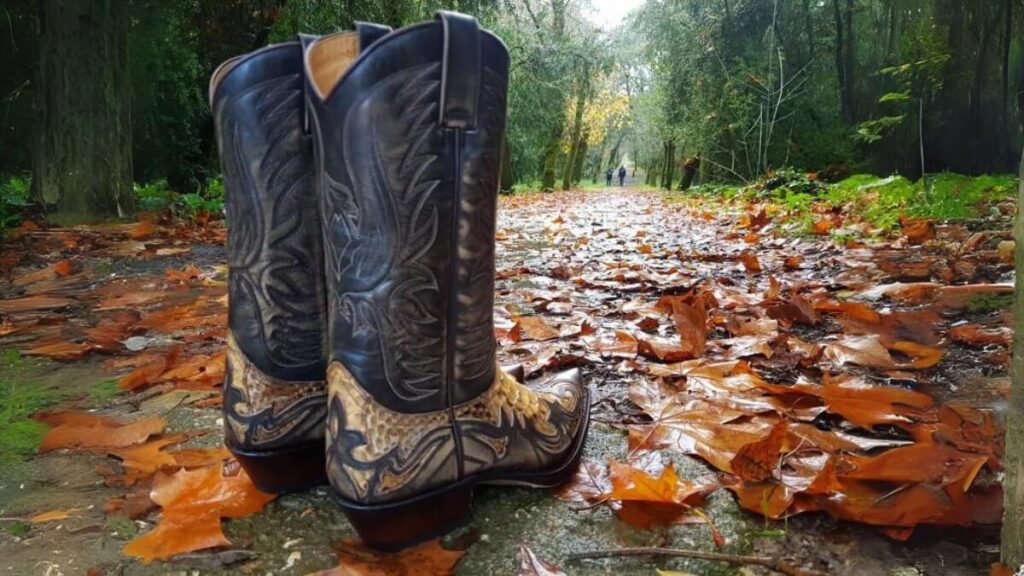
By choosing fish skin boots, we are making a statement about our style and actively contributing to a movement prioritizing responsible consumption and environmental stewardship. Each step in these remarkable boots is a step towards a more conscious and mindful future where fashion and sustainability coexist harmoniously.
So, let us embrace the future of sustainable fashion, one pair of fish skin boots at a time. Let us celebrate the beauty of nature’s gifts and the ingenuity of human innovation. Together, we can pave the way for a world where style and sustainability are no longer mutually exclusive but a seamless fusion of fashion and environmental responsibility.

